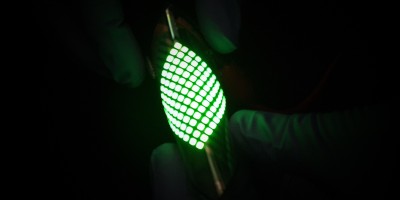Using fluorinated elastomers in the fabrication of soft neural probes is shown to enhance spatiotemporal recording capability at single-neuron resolution within the central nervous system of rodents. Other soft encapsulation materials could be similarly engineered for high-resolution, long-lasting bioelectronics.

References
Steinmetz, N. A. et al. Neuropixels 2.0: A miniaturized high-density probe for stable, long-term brain recordings. Science 372, eabf4588 (2021). This paper reports high-density neural recording using rigid probes and algorithms to compensate for signal drift.
Zhao, S. et al. Tracking neural activity from the same cells during the entire adult life of mice. Nat. Neurosci. 26, 696–710 (2023). This paper reports long-term stable brain recordings using flexible probes.
Zhao, Z. et al. Ultraflexible electrode arrays for months-long high-density electrophysiological mapping of thousands of neurons in rodents. Nat. Biomed. Eng. 7, 520–532 (2023). This paper reports long-term brain recordings using flexible probes.
Tang, X., Shen, H., Zhao, S., Li, N. & Liu, J. Flexible brain–computer interfaces. Nat. Electron. 6, 109–118 (2023). A review article that covers the potential and challenges of flexible brain–computer interfaces.
Liu, Y. et al. Soft and elastic hydrogel-based microelectronics for localized low-voltage neuromodulation. Nat. Biomed. Eng. 3, 58–68 (2019). This paper reports the use of fluorinated elastomers for peripheral nerve neuromodulation.
Additional information
Publisher’s note Springer Nature remains neutral with regard to jurisdictional claims in published maps and institutional affiliations.
This is a summary of: Le Floch, F. et al. 3D spatiotemporally scalable in vivo neural probes based on fluorinated elastomers. Nat. Nanotechnol. https://doi.org/10.1038/s41565-023-01545-6 (2023).
Rights and permissions
About this article
Cite this article
Soft high-density neural probes enable stable single-neuron recordings. Nat. Nanotechnol. 19, 277–278 (2024). https://doi.org/10.1038/s41565-023-01546-5
Published:
Issue Date:
DOI: https://doi.org/10.1038/s41565-023-01546-5
- Springer Nature Limited


